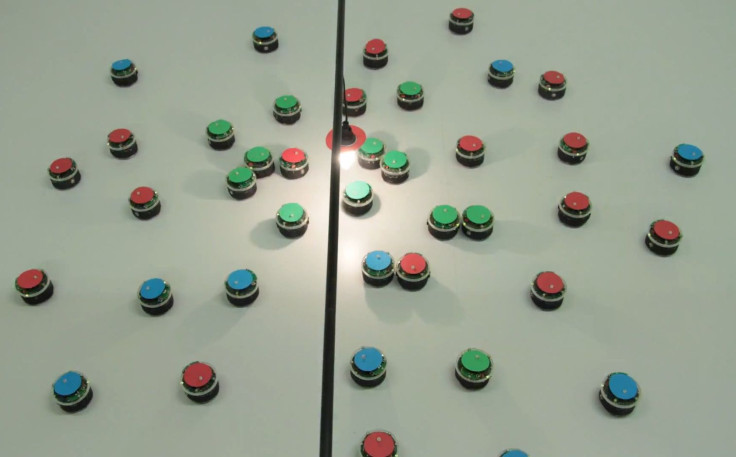Swarming Robots: Nanobot Miniature Drones Could Advance Micromedicine [VIDEO]

Research on swarming robots may lead to the use of tiny nanobots for micro-medicine - swarms of miniature drones that could attack harmful pathogens in the human body with microscopic precision.
The Sheffield Centre for Robotics in the United Kingdom has pioneered a system of 40 small robots that move independently, but can be programmed to swarm together when given specific commands or encountering specific stimuli.
"We are developing Artificial Intelligence to control robots in a variety of ways," said Dr. Roderich Gross, head of the University of Sheffield's Natural Robotics Lab, in a news release. "The key is to work out what is the minimum amount of information needed by the robot to accomplish its task.
"That's important because it means the robot may not need any memory, and possibly not even a processing unit, so this technology could work for nanoscale robots, for example in medical applications."
Each unit of the robot swarm is programmed to sense the presence of another robot around it. The researchers aimed to keep the necessary coding as simple as possible: "if the robots are being asked to group together, each robot only needs to be able to work out if there is another robot in front of it. If there is, it turns on the spot; if there isn't, it moves in a wider circle until it finds one."
As a result, the swarming robots can quickly bounce into formation after being scattered around an open space. A basic hierarchy determines how they cluster together.
When working in concert, the swarming robots can fetch things on command, or push objects across a surface. The researchers imagine them being put to use as "servants of the future" in a wide variety of capacities, from cleaning houses to conducting search and rescue operations in conditions too dangerous for humans.
Micro-medicine is an especially exciting target for swarming robot research. The robots that the team is currently displaying are far too large to be used medically, but it's easy to imagine the basic swarming principle they demonstrate combined with existing nanotechnology.
Gross imagines a future where swarms of miniature drones, or nanobots, can provide non-invasive treatment for human diseases. Instead of invasive surgeries or chemotherapies, which can lead to risky complications or debilitating side effects, microscopic nanobots could swarm to the source of cancerous tumors and release medicine, or break down deposits in blocked arteries.
Swarming robot research has been informed by observations of the animal kingdom. Biologists have observed swarming behavior in many animal species, from ants to geese, and mathematical modeling of their movement patterns has helped computer scientists figure out how to program robot swarms.
Watch the University of Sheffield's swarming robots in action:



























